I had the best time a couple of weeks back. A lovely Hungarian chef invited me into her kitchen and we cooked together.
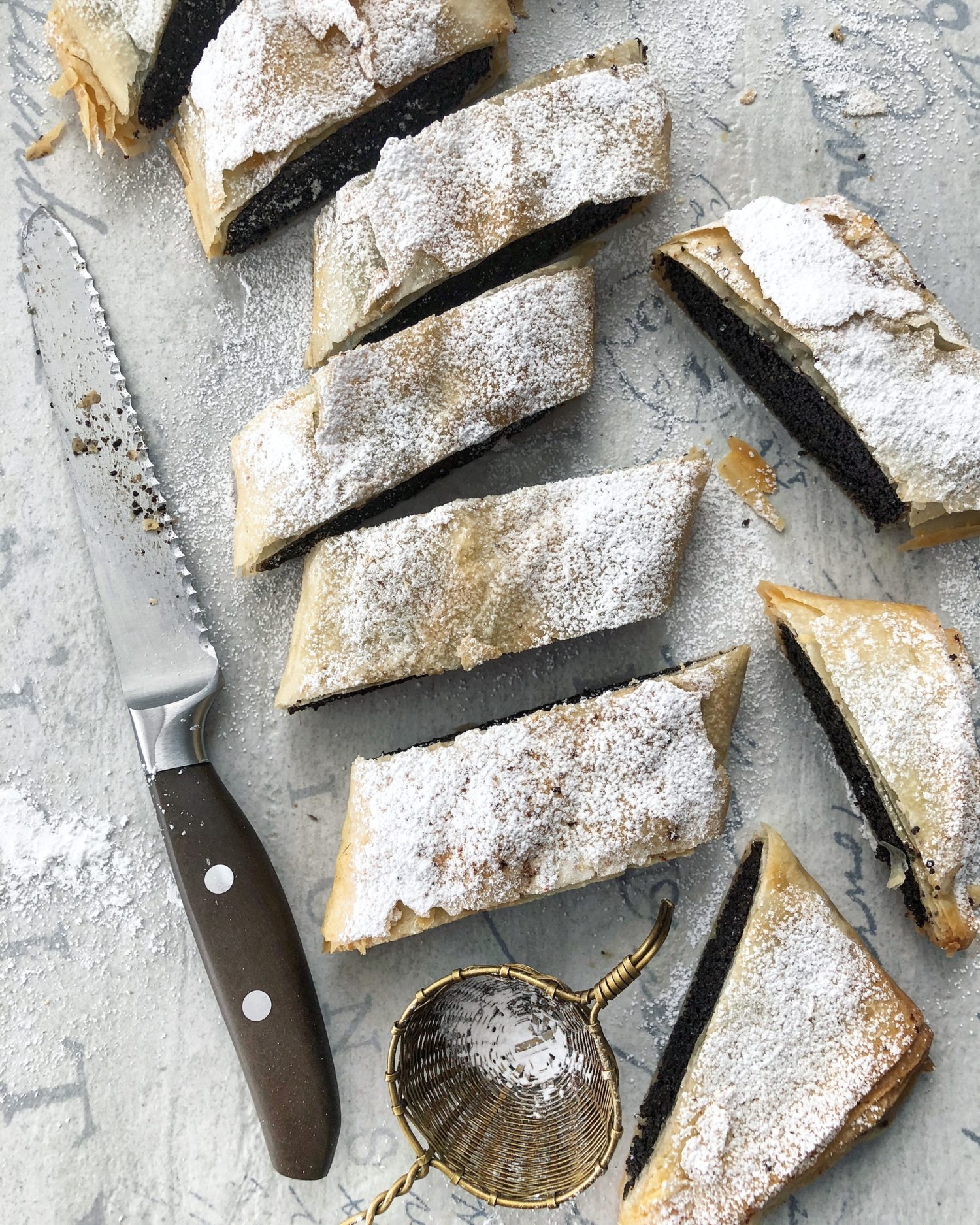 Except that I didn’t leave my kitchen. And she didn’t leave hers in Budapest. We cooked together via Skype. Would you believe, this was the first time I truly used Skype?! I had a brief intro to it, just to understand it, but I’m not counting that time!
Except that I didn’t leave my kitchen. And she didn’t leave hers in Budapest. We cooked together via Skype. Would you believe, this was the first time I truly used Skype?! I had a brief intro to it, just to understand it, but I’m not counting that time!
This post is a paid partnership with Wüsthof Canada and ‘The Chef and The Dish’. And I enjoyed every minute of the experience! Jenn Nicken, the founder of this amazing concept approached me to see if I would like to experience it for myself. At first I was apprehensive. Not because I didn’t want to cook in real time with an expert in the various cuisines they have gathered, but because, I’m not one to be on camera! I was kind of nervous. Looking back now, I realize how silly that was of me! You totally forget about the camera as the chef is explaining a technique, or is waiting for their own pot of water to come to a boil. It really did feel like we were in the same kitchen, just working at different counters.
The Chef and the Dish (TCATD) is such a fabulous idea. They connect the user (like me) with expert, Michelin starred, talented chefs from around the world. Then for an evening (or afternoon, whatever works for you!) you have a personal chef guiding you through the cuisine of your choice, from a diverse selection that TCATD introduces you to.
Once you have decided on a cuisine, TCATD arranges the Skype time, and sets you up with the grocery list and equipment list. But they don’t give you the recipes ahead of time. That way you won’t jump the gun and start prepping, thinking that you are doing a practical thing by getting ready this way. This defeats the purpose of working along with a chef. You may find out that the way you want to prep the veggies is nothing like how they will be instructing you (I learned this when I was cooking along with Agnes, regarding the prep for the Goulash!)
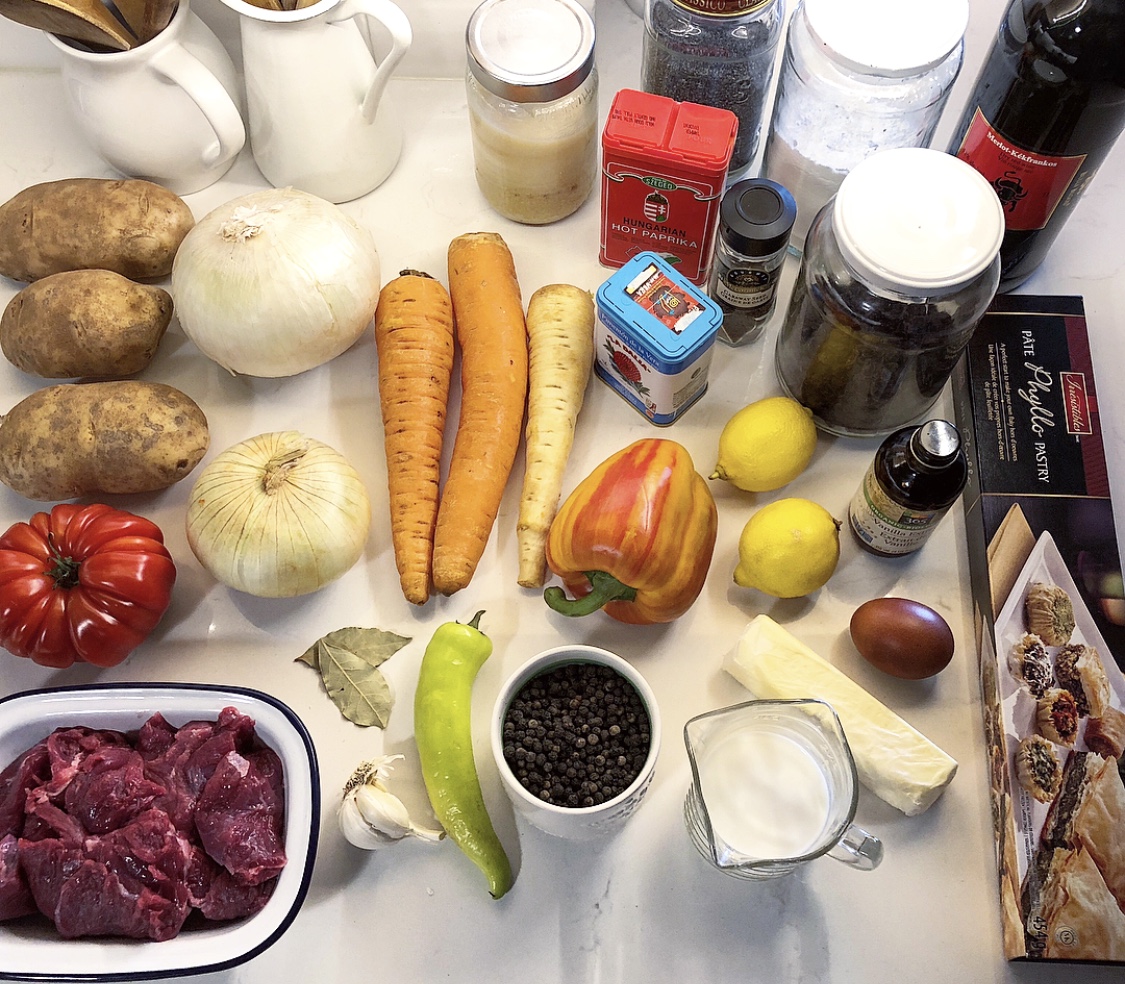
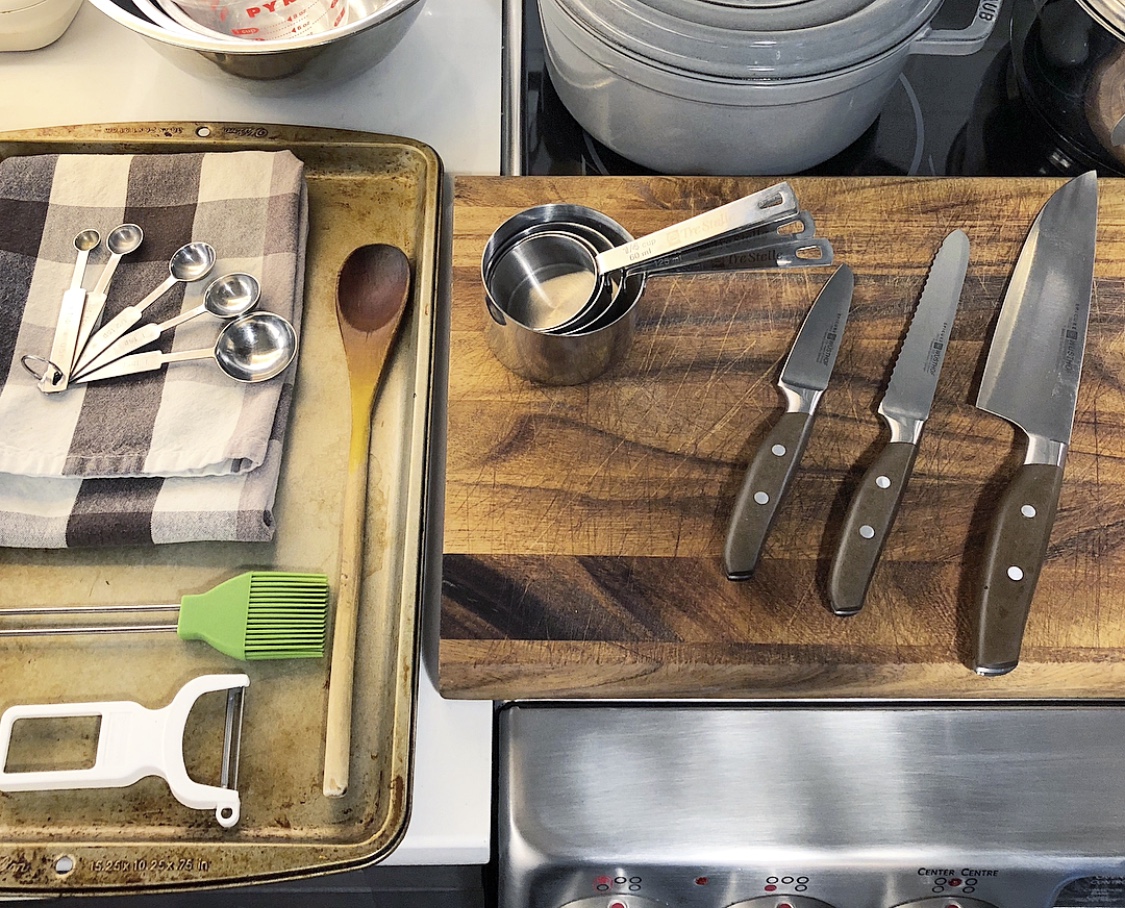
They ensure that you are all ready to go, before the Chef contacts you and your camera is live! By the end of the evening, it’s like you’ve made a new friend. I know that I did! I got to know Chef Agnes Barath as we chatted and cooked. We asked questions about each others’ home life, family, favourite childhood foods, the differences between German and Hungarian cuisines, and even family traditions. If I could have reached through the screen to give her a hug at the end, I would have!
Agnes taught me three new recipes. A Hungarian Goulash, Pinch Noodles, and a Poppy Seed Strudel. I was so excited by each recipe, when I received the outline of what the day would entail. Growing up, goulash in our house was more of a stew. But I would learn that it is truly a soup to Hungarians. I thought that the Pinch Noodles would be similar to German Spätzle, but I was wrong, again! And the Strudel was again a different style, compared to the strudels that I was accustomed to. So, it would be a very informative afternoon for me!
Along the way, Agnes’ expertise as a professional chef shined through. We were both using the new Wüsthof line of knives: the Epicure line. Superior German crafstmanship (am I biased?!) meets Japanese styling and ergonomics in these knives. They are amazing to hold, let alone cut with. The grip is smooth, weighty in the best way possible, and just fits the palm like a glove. The blades are sharper than any I have ever worked with before. And this is no accident- they are crafted to be sharper and the edge lasts longer than other blades. Agnes and I glided through the vegetable dicing and mincing, meat cutting, and finally the strudel slicing like a walk in the park. For the most part I was using the Chef’s Knife and the Paring Knife. But I think it was the strudel that really made the Sausage (Bread) Knife with the serrated edge shine. Cutting through the layers of crispy phyllo dough, and the filling of ground poppyseeds, milk and sugar thrilled me (yes, I can get thrilled by something so basic!). The slices were just so clean and neat! It didn’t leave portions of the pastry uncut or only torn. I have now been officially spoiled for other knives!!
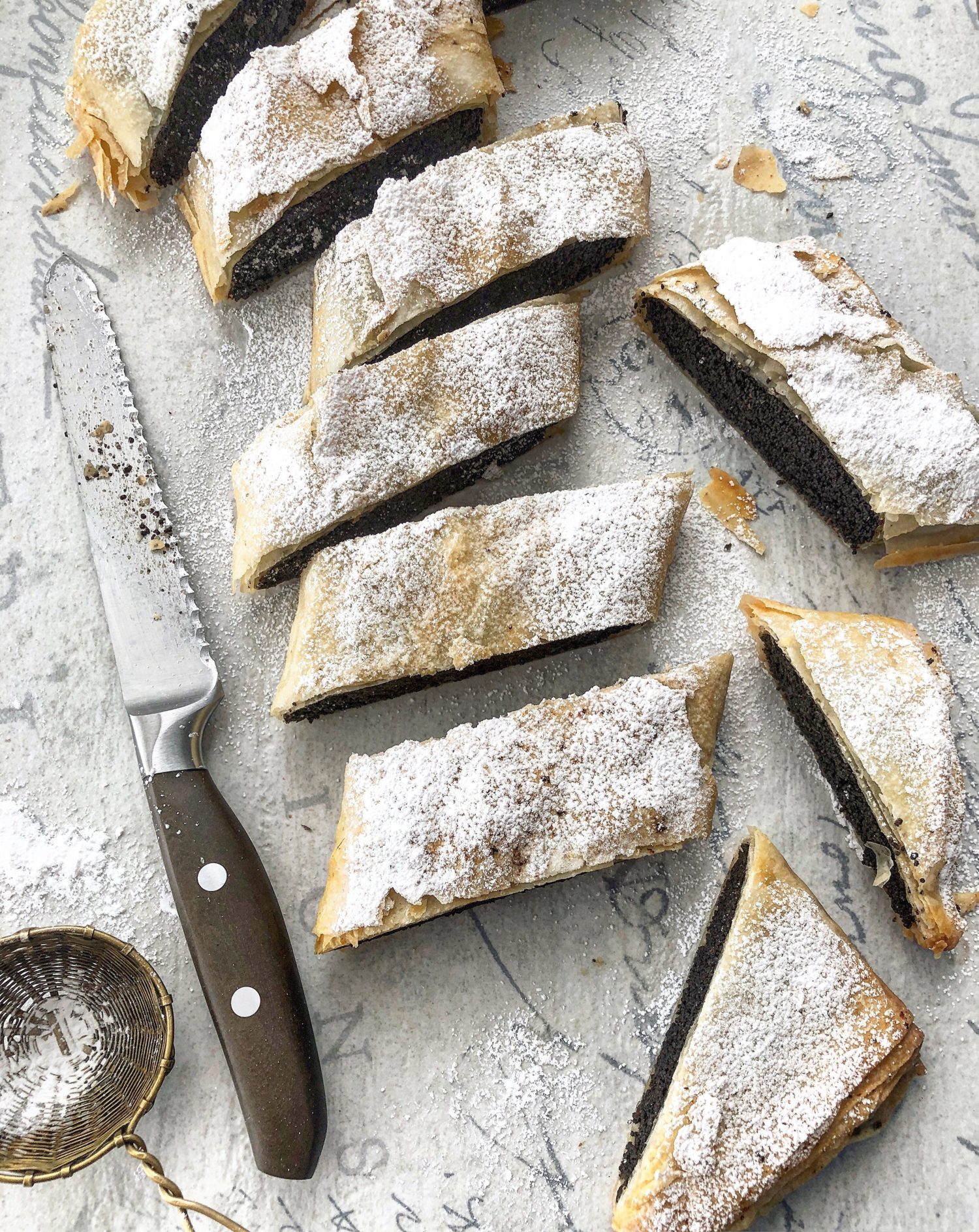
So yes, we created a wonderful hearty, spicy Goulash soup of onion, peppers, tomatoes, meat, cut up carrots and parsnips, and seasonings. I learned how Hungarians view Sweet Paprika vs Hot Paprika (she wouldn’t doesn’t use the hot as often, as she is cooking for her family which includes young children). Pinch noodles and potatoes were added towards the end. The noodles are a rustic egg noodle, and making them by hand (as the name suggests) is a therapeutic way to pass the time. When I first found out that I would be making Goulash along with Agnes, I was worried that the weather would be too warm to warrant such ‘stick to your ribs’ kind of meal. I was so wrong! It couldn’t have come at a better time. Toronto was about to enter a crazy frigid week that resulted in an Ice Storm. In April. 😐 This meal was exactly what the doctor ordered!
While I now have these recipes to add to my collection, I don’t think I should share them all with you. If I do that, then you’ll have no reason to check out TCATD for yourself! But I can share the Poppy Seed Strudel recipe. So I will!
German strudels are rolled using a very elastic pastry dough. I cheat, and often use puff pastry. Only because I just don’t have it in me to devote so much time to the work of creating that dough! I’ve never had anyone turn down a piece of strudel that I place in front of them, so I’m quite content and rather happy with my strudels, both sweet and savoury. On the other hand, Hungarian strudels use phyllo dough, an altogether different texture and look. But really, quite similar to puff pastry, in that that pastry work has already been done for you!
Before Agnes had me lay out the sheets of phyllo, she had me make the filling. It is a combination of the freshest poppy seeds you can find, ground down in a small coffee grinder to really create a fine crumb, warmed milk and powdered sugar, and lemon zest. The final filling is a thick mixture/paste. There is something so…European about poppy seeds! Ever since I was a little girl, I have adored any pastry with poppy seeds in it. The pastries they are usually in aren’t overly sweet or cloying. They work perfect with a cup of strong coffee, or even as a breakfast treat. Agnes suggests raisins be an addition to the filling, so I actually ground them in with the seeds- they helped the seeds break down better, and this way there aren’t huge raisins dotting the filling- smaller pieces are less imposing, I think!!
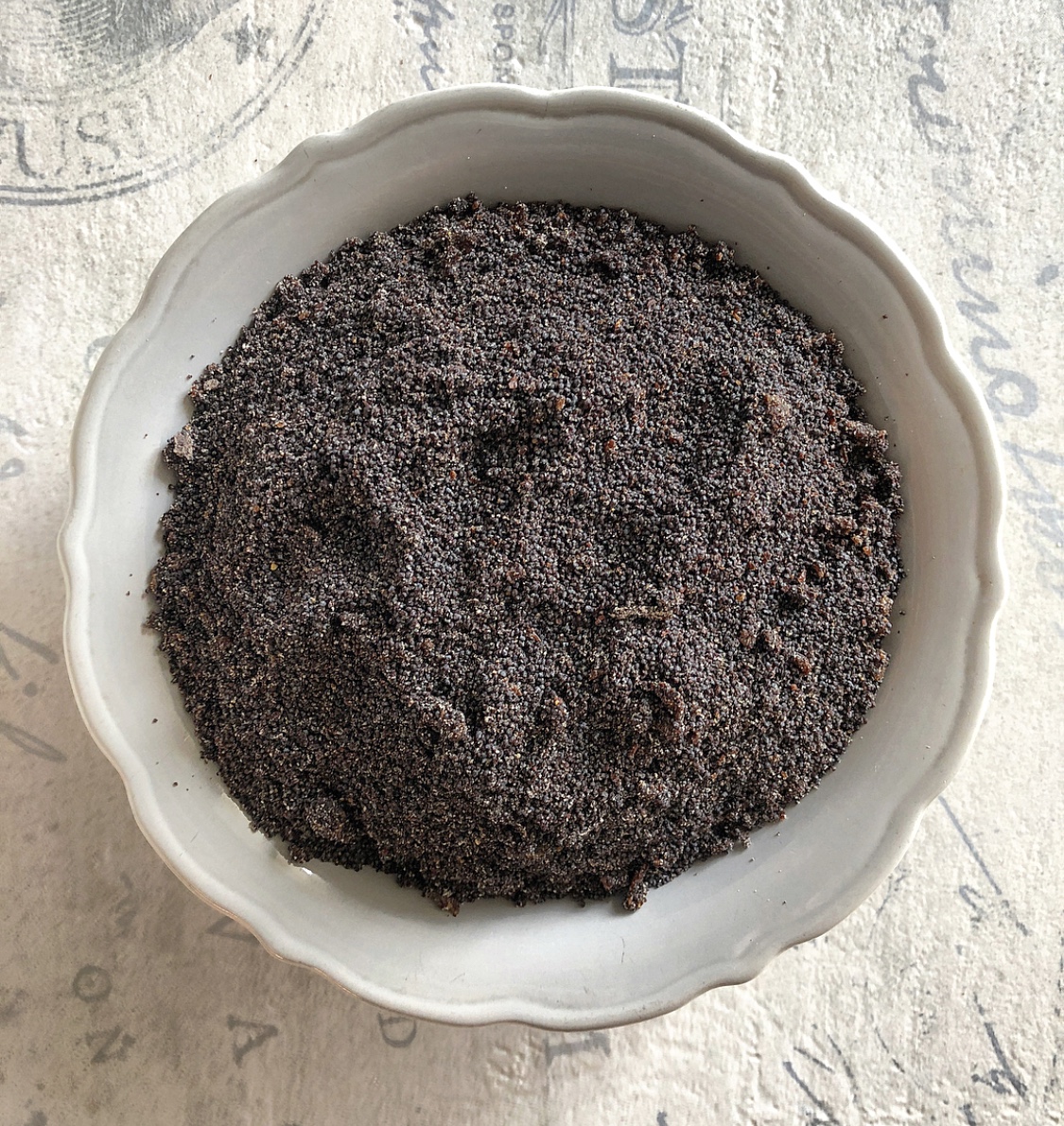
Of course, melted butter is a necessity when working with phyllo. But instead of just a simple melted butter, she had me turn it into a browned butter. Much nuttier, and this flavour is exactly what makes this a step up from a typical strudel of this sort. I’m so glad we took the time to brown it! We brushed our layers of phyllo. And then we laid out the filling across the bottom of the layered sheets. The sheets were resting on a damp tea towel. When ready, we just picked up the bottom edge of the towel to life up the dough, and then fold it over the filling. Then we rolled again using the towel, and the entire pastry rolled onto itself. Keep this up until the pastry is used up. This then gets transferred to a parchment lined baking sheet. Brushed with the last of the butter, and into the oven for 15 or so minutes, till golden brown. That’s it! But the end result is simply scrumptious!
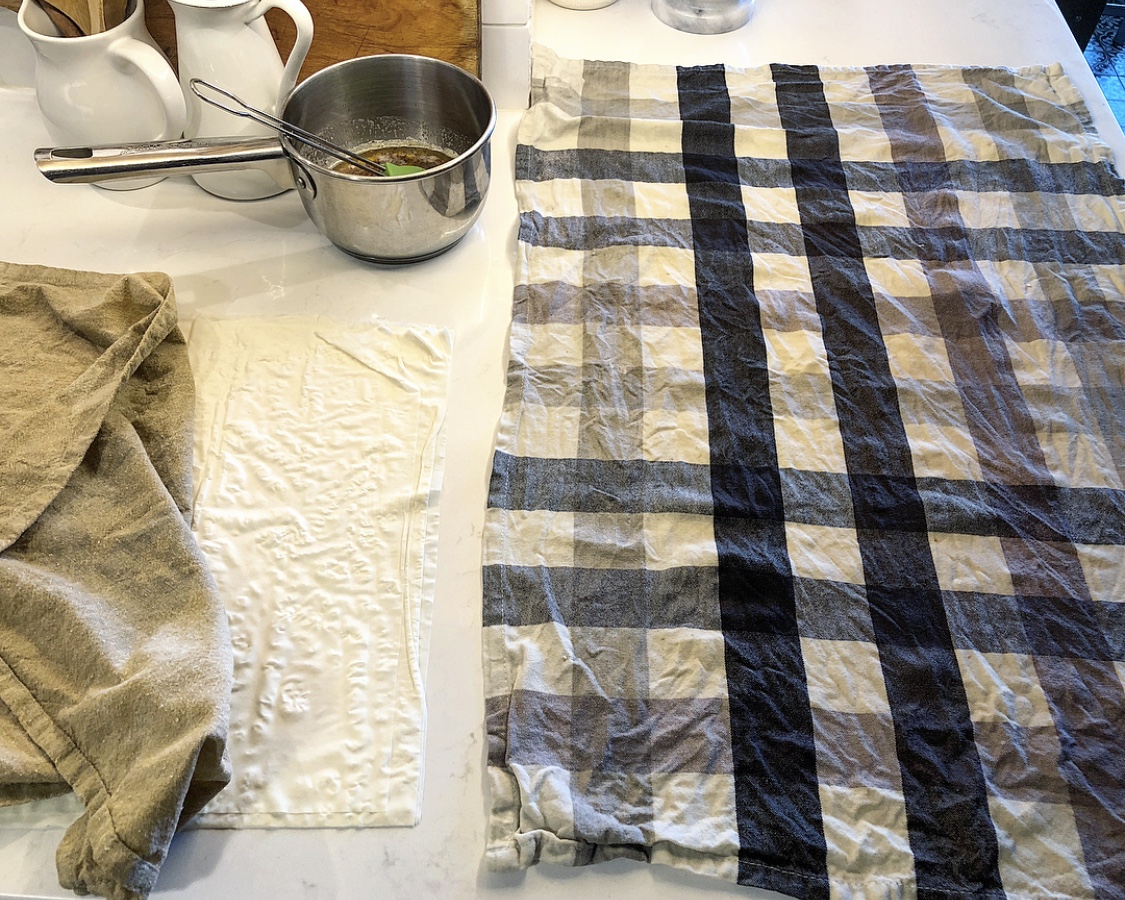
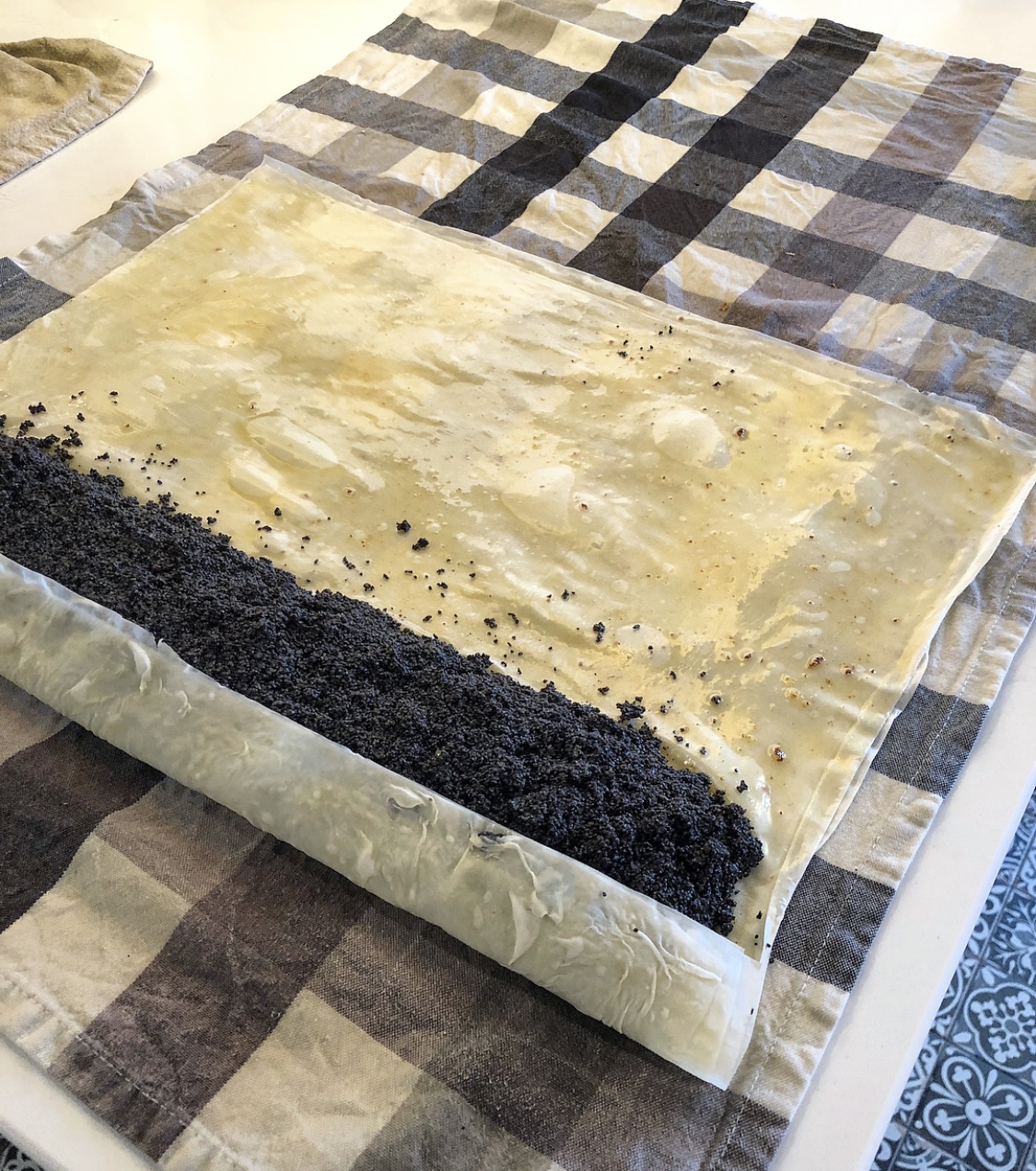
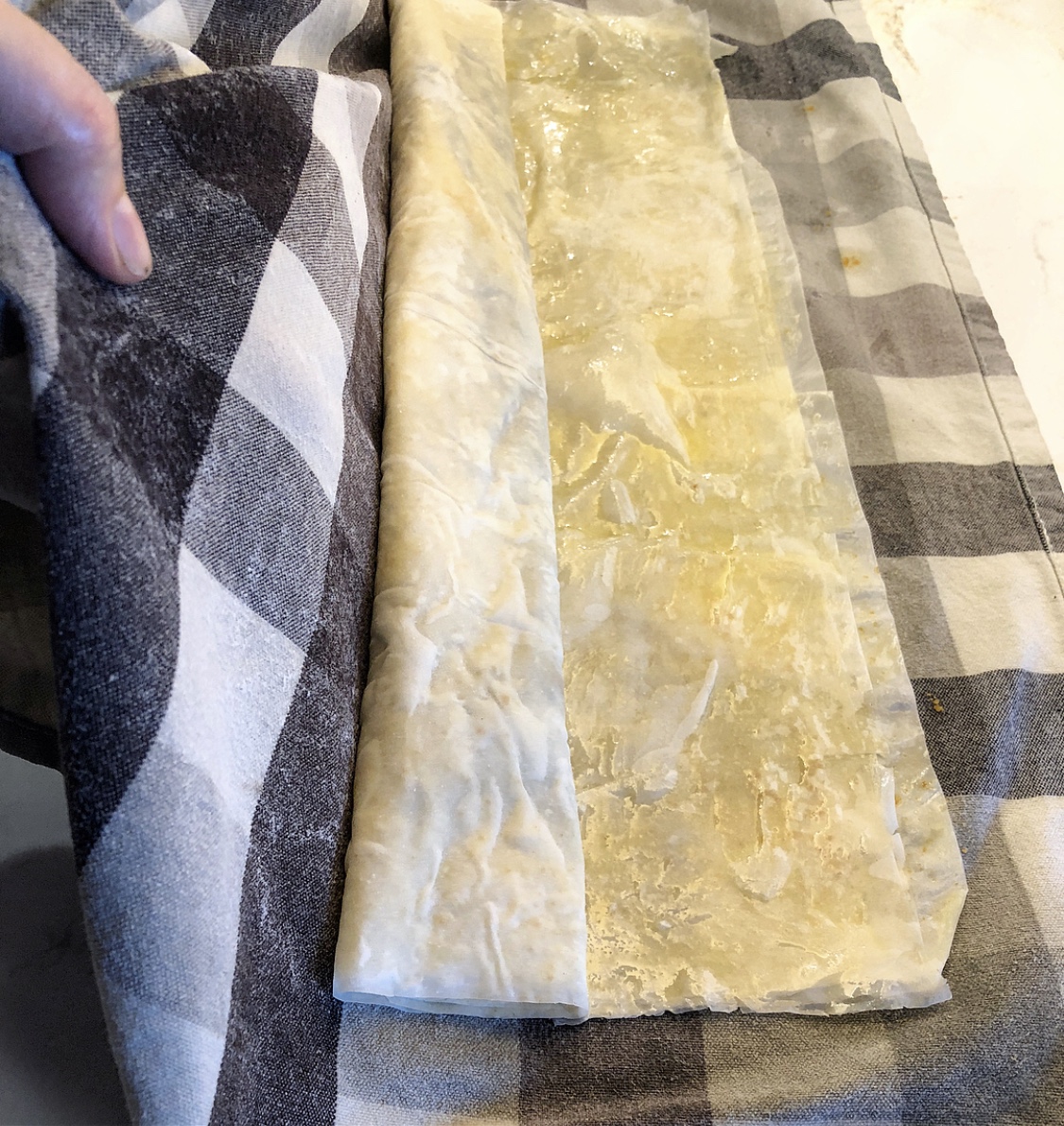
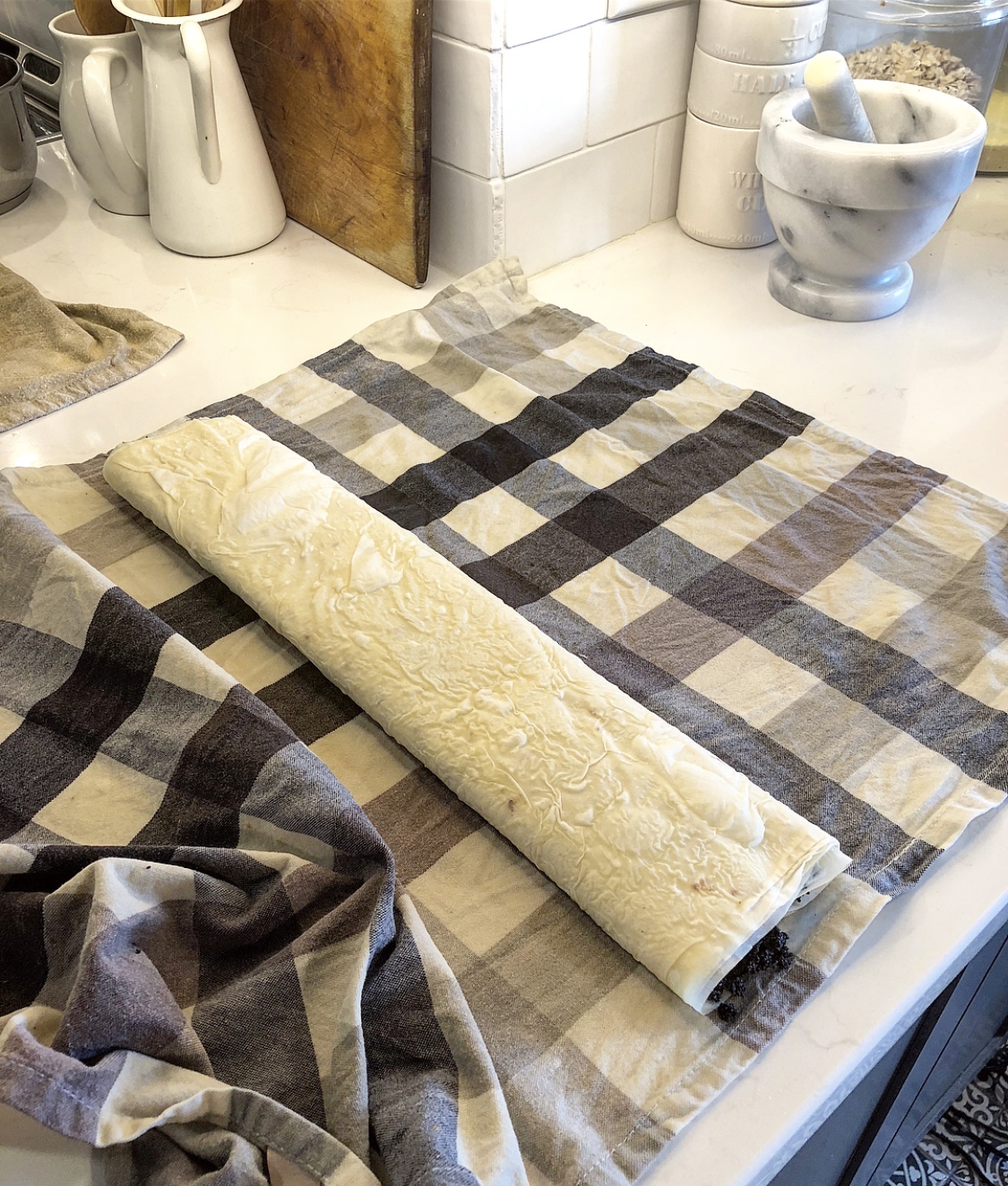
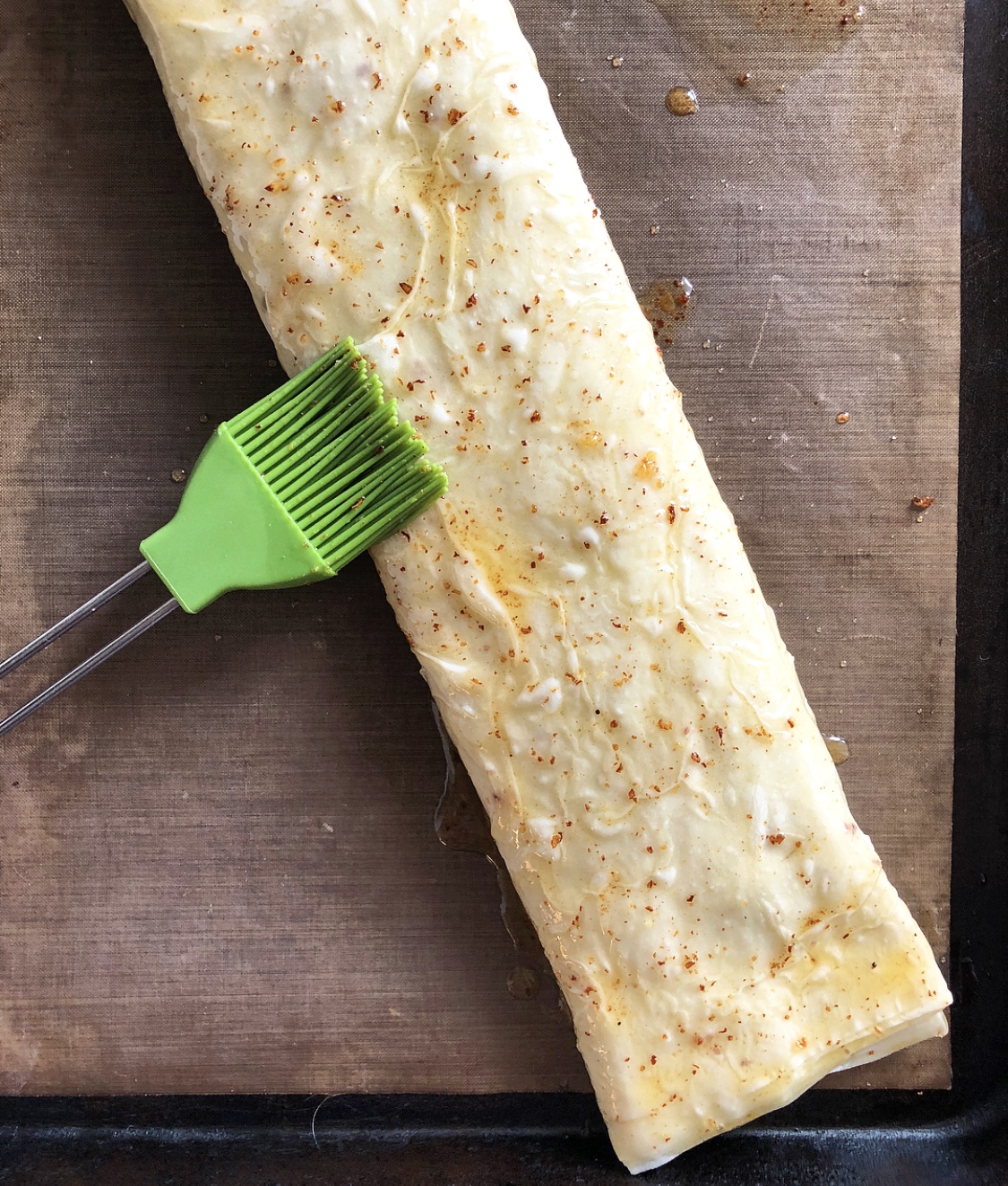 This is such an easy pastry to prepare if you have company coming over, or if you want to bring something to a gathering, shower etc. The hardest part is picking up the poppy seeds. Agnes stresses using the freshest you can find. I totally agree. Have you ever tasted poppy seeds that have gone rancid? No fun, so bitter! But fresh will make this dessert a dream. A good source will be able to tell you when they were brought in. At least check the expiry date. The packages I used had an expiry date of 2021, so I was good! I hope you guys like this recipe as much as I do. It takes what could be a much more time consuming recipe, and gives us something easily created that is beyond tasty! And having said that it is a wonderful recipe to whip up, I encourage you to serve it with plenty of liquids on the side- to catch any stray poppy seeds!!! Like a good poppy seed or ‘everything’ bagel, these seeds have a tendency to leave evidence of their presence!
This is such an easy pastry to prepare if you have company coming over, or if you want to bring something to a gathering, shower etc. The hardest part is picking up the poppy seeds. Agnes stresses using the freshest you can find. I totally agree. Have you ever tasted poppy seeds that have gone rancid? No fun, so bitter! But fresh will make this dessert a dream. A good source will be able to tell you when they were brought in. At least check the expiry date. The packages I used had an expiry date of 2021, so I was good! I hope you guys like this recipe as much as I do. It takes what could be a much more time consuming recipe, and gives us something easily created that is beyond tasty! And having said that it is a wonderful recipe to whip up, I encourage you to serve it with plenty of liquids on the side- to catch any stray poppy seeds!!! Like a good poppy seed or ‘everything’ bagel, these seeds have a tendency to leave evidence of their presence!
Thank you Agnes, for a lovely time, cooking with me. And thanks for sharing your tips and tricks, I will employ them regularly!
*Here is something that I had to investigate regarding phyllo dough. We usually buy it in the frozen section of the grocery store. When we thaw it, we are usually only using a portion of it (in this recipe, only four sheets) Because my experience with phyllo is limited (I’m more a puff pastry gal), I looked at the rest, and wondered, ‘What now?’ Well, I learned via Google, that if you keep the sheets covered with a damp cloth while they are out on the counter, the unused portion can be wrapped in plastic wrap and stored in a tightly sealed freezer bag. The dough will keep for several months. Another suggestion was to take the entire thawed portion and before using any of it, divide it into 4 or five equal sections and wrap up and store as above. Then you only need to remove one section at a time without affecting the rest of them. I will definitely do this going forward.
Love Jen
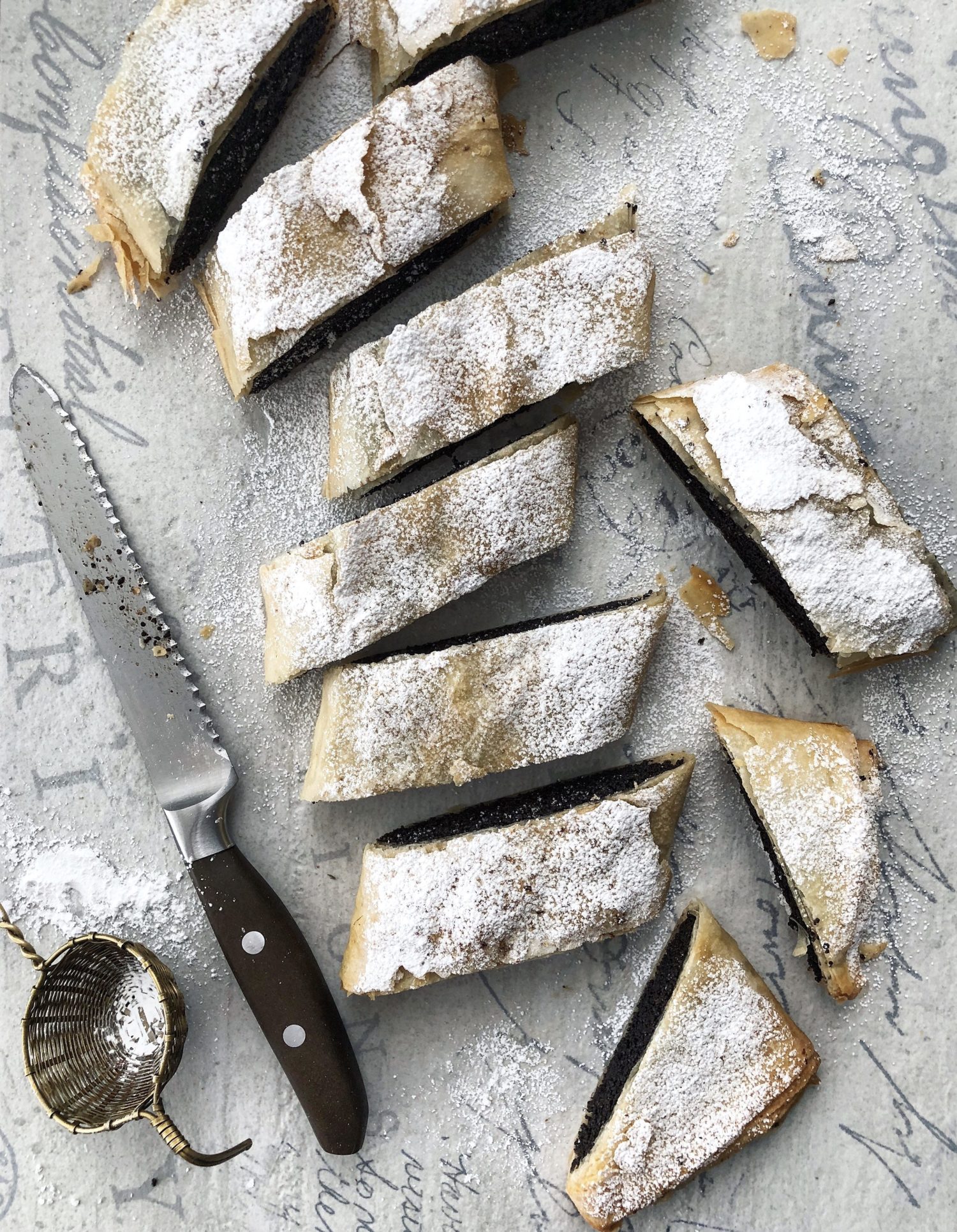
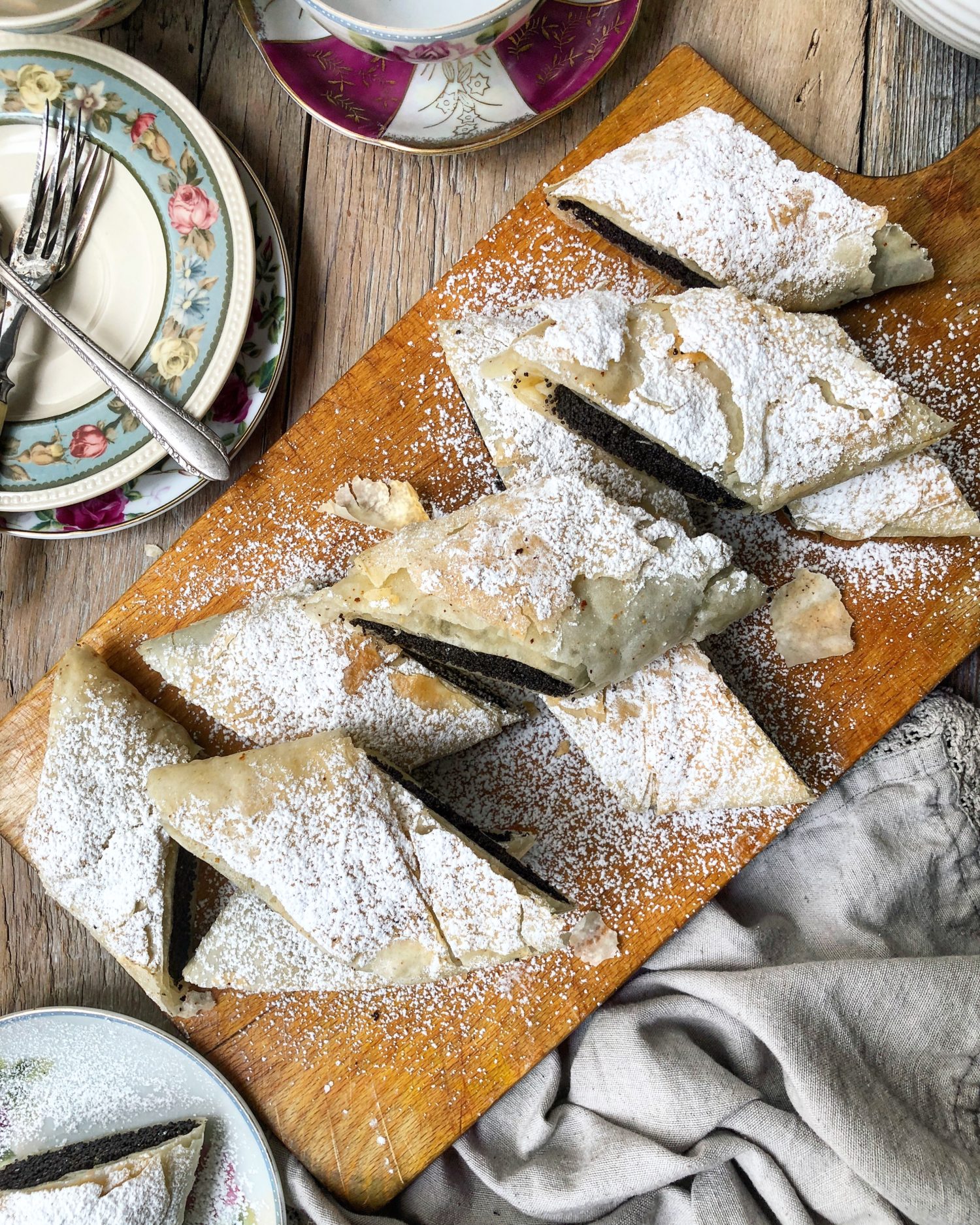
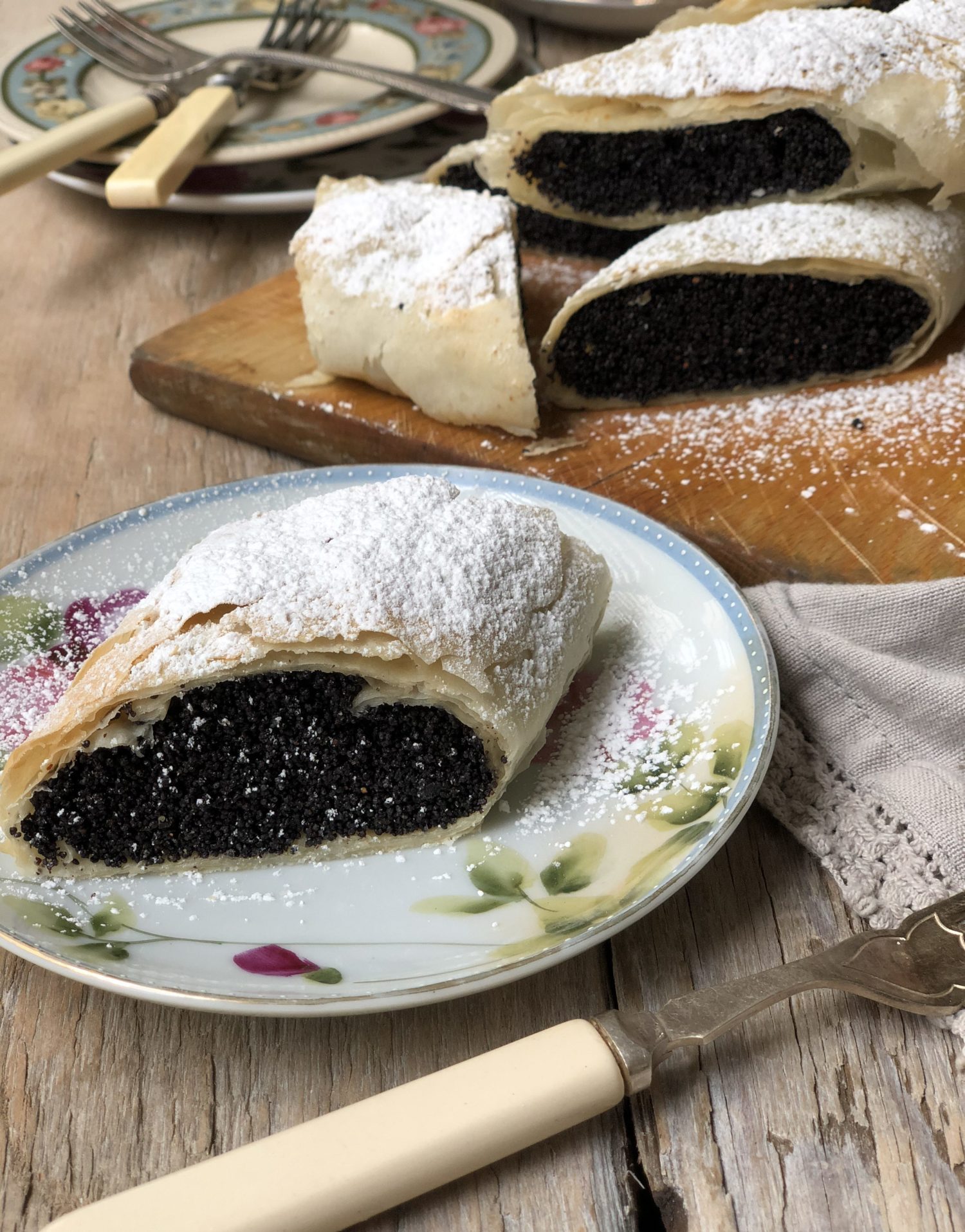

Brown Butter Hungarian Poppy Seed Strudel
Brown Butter is brushed on layers of phyllo dough which get wrapped around a wonderful mixture of ground poppy seeds, milk, sugar, cinnamon and raisins. In no time this classic European pastry is ready to be dusted with icing sugar and enjoyed with a cup of coffee, or even a grappa!
Ingredients
- Phyllo dough thawed, 1 package, see Notes
- 1/2 cup (1 stick) Butter
- 2 cups (250 grams; 9 oz) fresh Poppy seeds
- 1/3 cup Raisins heaping
- 1/2 cup Milk
- 1 tsp Lemon Zest
- 1/2 cup Powdered Sugar
- 1/2 tsp Ground Cinnamon
Instructions
-
Preheat the oven to 375°F (190°C).
-
In a small saucepan, over medium heat, lightly brown the butter. It will go through the foaming stage, the 'popping' sound stage, and then you will see brown bits of the butter fat settle to the bottom. Time to remove from the heat. Set aside.
Poppy Seed Filling
-
Take your poppy seeds and raisins and in small batches, grind them well in a small coffee grinder (Nutri Bullet type, if you know what I mean!) You don't have to add the raisins here, but I find that breaking them down with the poppy seeds will mean that they won't be so obvious in the filling once it bakes up. They will also help the seeds break down a bit better. You want as fine a grain as possible. But of course, the raisins will not end up as small as the poppy seeds.
-
In a pan heat milk with sugar and bring it to a light boil. Take pan off the heat.
-
Add ground poppy seeds, raisins, ground cinnamon and lemon zest. Mix well and let cool completely.
-
Wet and wring out a kitchen towel. Lay out flat on a clean counter.
-
Place the phyllo sheets that you will be using gently next to the towel. I keep these covered with a damp towel as well.
-
Remove one sheet and carefully lay it down on the wet towel. I lay mine out horizontally (landscape)
-
Carefully and GENTLY brush the entire sheet with some browned butter.
-
Place a second layer of phyllo on top, butter and repeat until you have four layers.
-
Spread poppy seed filling evenly along the bottom of the dough, leaving about 1 inch along the bottom and sides. It should look something like a 3" or so wide log.
-
Using the towel as a tool, roll dough tightly around the filling and place on baking sheet. Depending on the size of your baking sheet, and how you rolled up your phyllo, it may need to go onto the sheet diagonally.
-
Brush strudel with browned butter.
-
Place into pre-heated oven and bake for about 20-25 minutes or until light brown. Check after 20 minutes.
-
Remove from oven and let cool.
-
Dust with powdered sugar, slice into 10 or so slices (depending on the size of yours, and how many you are serving) It can be an intense flavour, so smaller rather than larger is better here!
Recipe Notes
You will only need 4 sheets of the thawed Phyllo. As soon as I had thawed mine, I divided it into 4 portions and refolded them in plastic wrap. I put three of them into a plastic bag and sealed it. These are now back in the fridge for other uses.
Store unused poppy seeds (and all nuts) in the freezer to keep their freshness. There is nothing worse than working so hard to bake something only to find that the rancid taste of old nuts and seeds is the only flavour that comes through.
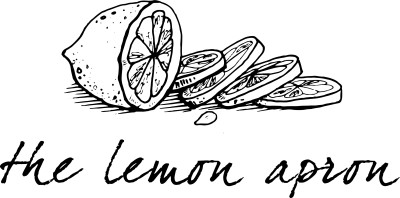
Leave a Reply